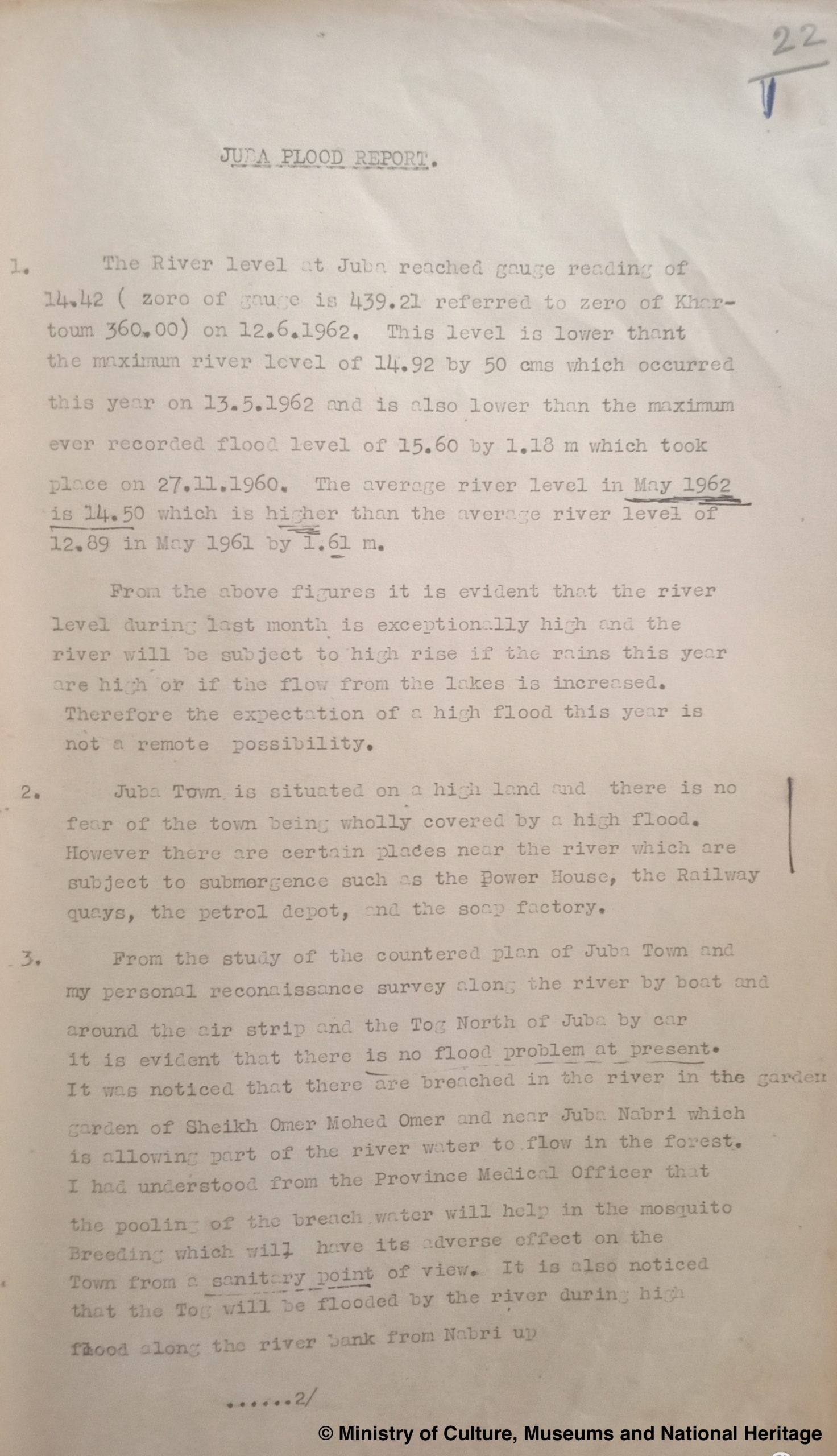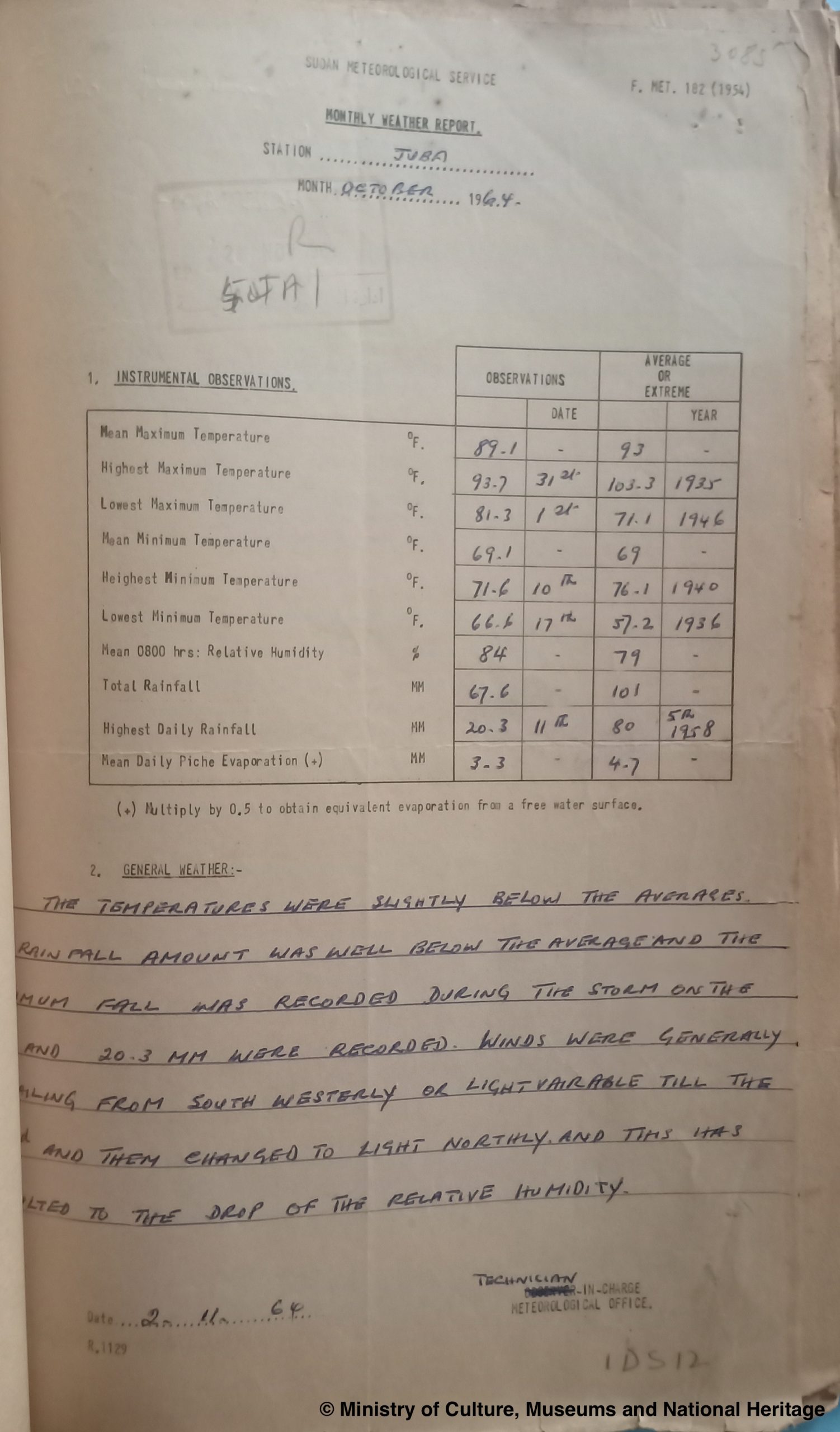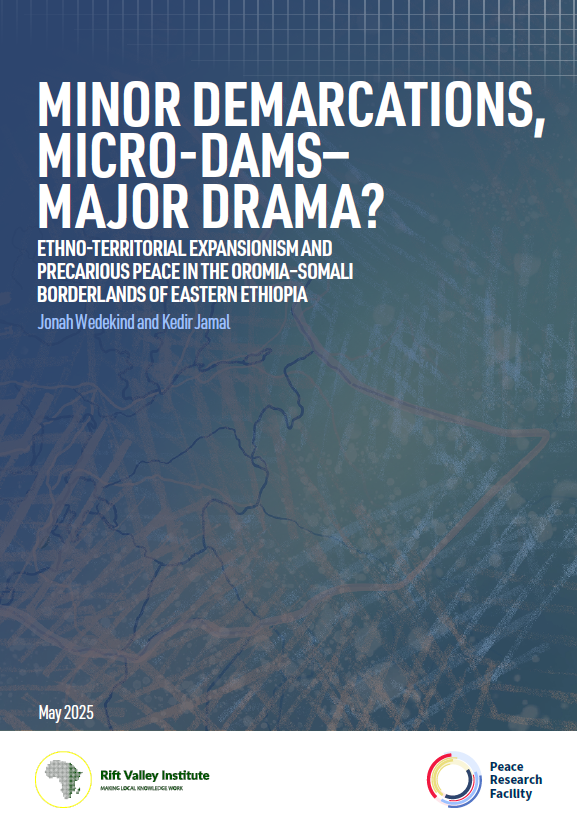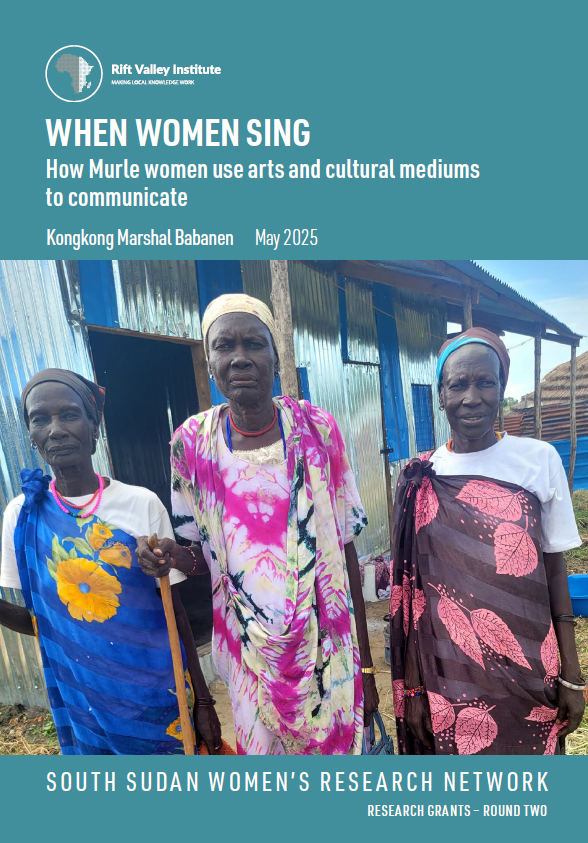
The Rift Valley Institute, in collaboration with the Ministry of Culture, Museums and National Heritage, is sharing selected, approved documents from the South Sudan National Archives through social media channels to showcase the range of information available in the collection. This project is implemented in partnership with UNESCO with funding from the Norwegian Government.
When the context allows, these documents will be published in a full public exhibition to be displayed in different locations across the country.
Climate change and environmental concerns: Understanding the quality of environment through annual rainfall patterns.
In 2019 and 2020, South Sudan suffered one of the worst flooding seasons in living memory, affecting about one million people and destroying homes, schools, roads and livelihoods. This is because South Sudan is experiencing the effects of global climate change. Climate change is increasing the volatility of global weather patterns, so that disasters like floods and droughts are increasing and becoming regularly destructive events.
Climate change can be attributed to the growth of human activity on the planet that is altering the composition of the atmosphere, through burning oil and gas, cutting down trees, factory emissions, and so on—particularly in the industrialized Global North. This increases the amount of carbon dioxide in the atmosphere, which traps the heat from the sun and warms the planet, creating dramatic changes in our climate. It is projected that the global temperature may rise by five degrees Celsius (nine degrees Fahrenheit) by 2100, causing catastrophic damage to the planet.

These are long-term trends on Earth, but they have immediate impact. In order to be able to track and respond to these environmental changes and prepare for floods and droughts, South Sudan’s colonial and independent governments have worked to track rainfall, river and climate data since the 1940s. This data is not complete, as it has been interrupted by conflicts, but the South Sudan National Archives holds records of environmental analyses and proposals for flood and drought defences, some of which were implemented across South Sudan. This work continues today.


